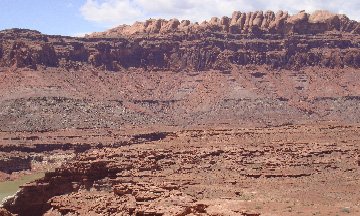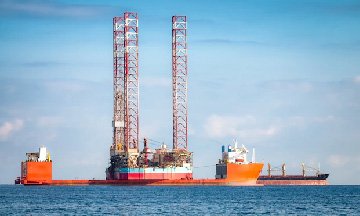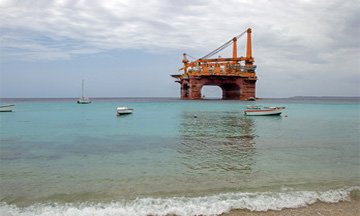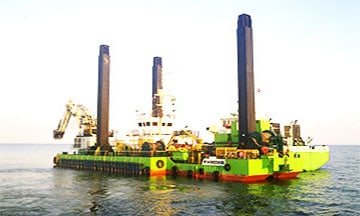Stratigraphy Sequence: Principles, Geological Correlation and Seismic Stratigraphy Analysis
Course Overview
The Stratigraphy Sequence: Principles, Geological Correlation and Seismic Stratigraphy Analysis training course from Zoe Talent Solutions present participants with practical applications of the principles of sequence stratigraphy for prima facie predictions in exploration and production. This Zoe course covers modern stratigraphy methods, concepts, and applications concerning reservoir characterisation, applied sequence stratigraphy, and geological correlation. It will deal with seismic and sequence stratigraphy analysis fundamentals, and concepts will be illustrated by outfield examples of seismic, core, outcrop data, and well-log. Contents provided will be utilised to determine and discover hydrocarbon plays, enhance the estimation of play and predict what lithology will be drilled ahead of a drill bit.
What are the Basic Principles of Stratigraphy?
Stratigraphy is based on fundamental principles governing the sedimentation process. Sedimentation is a product of the accumulation of rock particles carried by agencies such as wind, glaciers, and water deposited in a basin. The mechanism of collection and sedimentation of stratified rocks such as lava flow determines the fundamental principles of stratigraphical studies. There are eight different principles or laws of stratigraphy: order of superposition, cross-cutting relationships, original horizontality, lateral continuity, unconformities, catastrophism, uniformitarianism, and fossil succession.
What is the Purpose of Seismic Stratigraphy?
Seismic stratigraphy is a field of study that interprets basin-filling sedimentary deposits known as sequences within a framework of sedimentation, subsidence, and eustasy using the time to correlate strata and determine the stratigraphy of unknown areas. The purpose of seismic stratigraphy is central to the interpretation of seismic reflectors. It is a predictive tool for different petroleum system elements such as seals, source rock, and reservoirs. Additionally, it allows for the application of geological concepts to seismic data and analysis.
Course Objectives
The objective of this training course is to equip professionals with the following:
- An understanding of the various types of sedimentary basins and their different depositional patterns
- Recognising the main sequences of seismic
- Integration of different stratigraphic information, radiometric dating, bio-stratigraphical, and chemo-stratigraphical
- An understanding of the vital role of chronostratigraphy in proving spatial and temporal displays of depositional packages
- Recognising the various terms and definitions utilised in seismic and sequence stratigraphy
- Learning how to integrate geological data and identify various sequences and parasequences on well logs
- Learn how to identify and determine system tracks, key geometrics, and bounding stratal surfaces in shelf to basin transects
- Identify incised valleys
- Learn how to develop predictive stratigraphic models
- Identify relative sea-level changes and their impacts on plate tectonics
Training Methodology
This training offered at Zoe Talent Solutions is tailored to include previous experiences, academic training, and the current skills of each skillset enrolled in the program. Therefore, the contents and outline of the program are subject to thorough analysis and scrutiny before training sessions commence. The course will be taught by seasoned experts and professionals within the industry who have garnered years of experience and practice various practical methodologies that will ensure constant and active learning by participants will be utilised in delivering this course.
The Zoe training course will be delivered through an active learning process involving role-plays, group activities, case studies, audio-visual and experiential learning that allows for easy absorption of the course material and practical contexts. This training technique was designed by Zoe Talents Solutions and is known as the Do-Review-Learn-Apply Model.
Organisational Benefits
When organisations enroll their employees for this training course, they stand to benefit in the following ways:
- Understand how to use seismic and sequence stratigraphy in new play definition and as an aid for play and prospect risking
- Optimal use of biostratigraphical data that is usually acquired by an organisation but not properly utilised
- Recognise the models and principles of seismic and sequence stratigraphy
- Identify the controls on basin stratigraphy
- Predict the presence and distribution of carbonate and clastic reservoirs and how to identify leads and prospects
- Planning and implementing biostratigraphical programs and analyses for best results at lower costs
- Rejuvenation of mature exploration of location through new ideas to discover missed oil accumulations
- Development of new exploration plays and concepts for wildcat drilling
Personal Benefits
Professionals enrolling in this training course will derive the following benefits:
- An understanding of the history of sequence stratigraphy
- How to recognise facies assemblage through core data and outcrops and how to reconstruct facies architecture
- Learn the various limitations of litho-correlations and the merits of integrated stratigraphical techniques
- Recognise relative sea-level lowstands and reservoir development
- Discover the fundamentals of sequence stratigraphy in carbonate systems
- Identify sequence stratigraphy in lacustrine environments
Who Should Attend?
This training course is designed for various experts in petroleum geology and archaeology and all other persons who wish to further their interests in the field. The following personnel should attend this course:
- Exploration geologists charged with using data and investigative methods to determine where mineral deposits, water, gas, oil, and other natural resources are located underneath the earth’s surface
- Petroleum engineers tasked with designing drill devices and planning techniques and methods for oil and gas extraction for both offshore and onshore reserves
- Quarry managers responsible for the smooth operation of quarries, opencast sites, and pits. They coordinate production and supervise all site systems
- Drilling engineers tasked with planning, developing, and supervising operations used in drilling gas and oil wells
- Civil engineers responsible for designing, planning, and supervising the construction and maintenance of structures like roads, airports, dams, sewage systems, etc
- Environmental engineers tasked with developing sustainable solutions to environmental problems
- Seismic interpreters tasked with assessing the amount of mineral deposits present in rock structures, the various extraction methods, and the likelihood of hazards during such a process
- Geophysicists engaged in the study of the physical components of the earth through gravity, electrical, magnetic, and seismic methods
- Sedimentologists engaged in the study of the textures, constituents, structures, and fossil components of sand, soil, and sediments of various geographical locations
- Reservoir engineers responsible for optimising oil and gas productions through accurate well placements, enhanced recovery techniques, and production levels. They also identify risks and develop forecasts on a reservoir’s potential
- Sustainability engineers responsible for delivering sustainable and low-energy projects for the environment
- Every other Person interested in the field of stratigraphical studies
Course Outline
The topics covered by the course include the following:
Module 1: Introduction to Stratigraphy Sequence
- Introduction
- Historical development of stratigraphy
- Basic principles of stratigraphy
- Fossil succession
- Lateral continuity
- Cross-cutting relationships
- Inclusions
- Unconformities
- Order of superposition
- Original horizontality
- Uniformitarianism and catastrophism
- Relationship of stratigraphical patterns to changes in subsidence rates caused by earth scale tectonic movements and regional processes
- Parasequences as a correlation device
- Parasequences and stacking patterns
- Sequence stratigraphy in mixed carbonate and clastic province
Module 2: Sequence Stratigraphical Surfaces
- Types of stratal terminations
- Stratigraphical contacts
- Sequence stratigraphical surfaces
- Maximum regressive surface
- Maximum flooding surface
- Regressive surface of marine erosion
- Basal surface of forced regression
- Correlative conformity
- Transgressive surface of erosion
- Difference between sequence stratigraphical surfaces and other stratigraphical contacts
- Mechanisms for identification of sequence stratigraphical surfaces on well-log section
Module 3: Sequence Definitions from Seismic and Wells
- The purpose and use of well log data
- Identification of stratal surfaces on seismic
- Definition of system and surface tracts
- Seismic facies analysis
- Geological correlations
- The purpose and use of well log data
- Analysis of seismic attributes
- Recognition of system tracts on seismic
- Analysis of seismic attributes
- Seismic geometrics
- Circle hierarchy
- Unconformities
- Eustasy
Module 4: Techniques for the Collection of Stratigraphical Data
- Equipment needed
- Choosing a traverse
- Measuring thickness
- Recording lithological characters
- Stratigraphic correlation
- Stratigraphic column
- Recording and collecting fossil data
- Preparing a stratigraphic column
Module 5: System Tracts
- System tracts in downstream-controlled settings
- System tracts in upstream-controlled settings
- Economic potentials of all kinds of system tracts
- Distinctions between upstream and downstream system tracts
- Identification of system tracts on well-log cross-sections and 2D seismic data
- Relative sea level
Module 6: Introduction to Chronostratigraphy
- Outline and overview
- Condensation surfaces
- Erosion and non-deposition surfaces
- Chronostratigraphy and seismic models
- Coastal onlap and eustatic
- Highstand System Tract (HST) alluvial, shelf sands, deltaic, and shoreline complexes
- Worldwide circle chart and application
- Exploration and production scaled strategies and case histories
- Transgressive Systems Tract (TST) incised valley fill, reservoir seal, and source rock
Module 7: Integrated Stratigraphical Techniques
- Stratigraphic terminology, procedure, and classification
- Lithostratigraphy
- Biostratigraphy
- Geomagnetic polarity time scale
- Radiogenic isotope geochronology
- Cyclostratigraphy
- Chemostratigraphy (strontium isotope stratigraphy, oxygen, and carbon)
- Other methods
- Determining chronostratigraphic correlations
Module 8: Models and Principles
- The Exxon Model
- Genetic stratigraphical sequences
- Sequence boundary recognition
- Sequence stratigraphical model
- Sequence boundary types and system tracts
- Other system tract types and variations on the ideal model
Module 9: Sequence Stratigraphy of Relative Sea-Level Lowstands and Carbonates
- Introduction to carbonate sequence stratigraphy
- Carbonate systems overview
- Highstand shedding
- Carbonate platform drowning and causes
- Relative sea-level low stands, evaporate, carbonate, and siliciclastic partitioning
- Controls on sedimentation and carbonate production
- Geological timescale
Module 10: Seismic Stratigraphy and Controls on Basin Stratigraphy
- Types of seismic reflector terminations
- Principles and geometry of depositional systems
- Orders of cyclicity
- Controls on basin stratigraphy
- Types of sedimentary basins
- Changes in accommodation space











